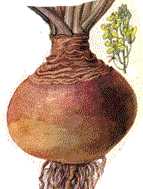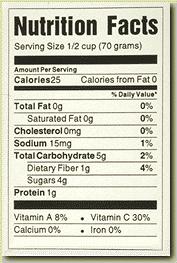

[NOTE: Cooking times must be increased 30% at altitudes over 3,000 feet. As a precaution, safety goggles are highly recommended during every phase of preparation.]Rutaburgers: In the unlikely event of leftovers, mold into thick "rutaburger" patties, bake for 14 hours at 750 degrees in a prewarmed oven and brown on a grill or frying pan. Serve piping hot in a moat of thick gravy.
[Note: Mixed with gray food coloring, mashed rutabaga leftovers also serve as a reliable substitute for mortar in various masonry applications.]

Marjatta Ripsaluoma of Vaasa, Finland, provides the following recipe with ancient Finno-Ugrian roots [pun not intended]. It is traditionally served during the Christmas holidays:
Ingredients:
[Note: Ms. Ripsaluoma writes that "Valamo is a monastery island on Lake Ladoga, in part what used to belong to Finland before the war. But there is also New Valamo, on the Finnish side, where our friend H. is going to in few days now, to celebrate Christmas."]
["You can pass on the ham," says your editor's daughter, a passionate vegetarian. --Editor]continue to hamper efforts to increase the appeal and marketability of the rutabaga. As every rutabaga recipes suggests, the extreme macromolecular densities and mass of the rutabaga guarantee excessive and impractical cooking times for all but the most dedicated rutabagans. However, ARSI's laboratories have taken an innovative look at the problem, resulting in several potential solutions:
Horticultural Information on the Rutabaga: More useful background information, with a simple recipe for microwaved rutabagas.
Nutritional Information
The busy laboratories of the American Root Farmers Federation (ARFF) have confirmed the findings on the nutritional content of certain root vegetables previously reported in "The Complete Book of Vitamins and Minerals for Health," published by "Prevention" magazine. And once again, the rutabaga triumphs easily over its competitors. The specifics follow:
- VITAMIN C [mg. per 1/2-oz. serving]:
18.60 - Rutabaga
06.45 - potato
04.68 - beet
09.05 - turnip
- CALCIUM [mg. per 1/2 oz. serving]
36.00 - Rutabaga
27.00 - potato
09.00 - beet
17.15 - turnip
- The study also found that the rutabaga is rich in a multitude of trace elements that don't naturally occur among its competitors, including: proactinium, osmium, unilloctium, strontium, dysprosium, antimony, praseodymium, gadolinium and yterrbium. The lanthanide and actinide series are abundantly represented as well.
[DISCLAIMER: ARSI neither warrants nor implies any health benefits arising from the presence of trace elements, actinides or lanthanides in rutabagas.]
Marketing the Rutabaga
Despite the strong nutritional findings reported above, the American public remains woefully unaware of the true virtues of the rutabaga. The latest statistics for market share (August, 1997) of the Big Five, reproduced below, remain extremely discouraging:
- Percentage of U.S. Market for root vegetables/tubers
99.9999789610% - Potato
00.0001329078% - Sweet potato
00.0000000036% - Beet
00.0000000018% - Turnip
00.0000000003% - Rutabaga
- Miscellaneous roots and tubers (beetroots, parsnips, celeriacs, kohlrabi, salsify, scorzonera, skirret, chervils, rampions and scolymus) occupy the remainder of the root market. [Note: The carrot and radish were excluded because they fill a different market niche.]
- The Sad Reality: The market share of rutabagas, after reaching a peak in 1933, is lower than at any time in modern history. This crisis will be addressed aggressively by your organization with a new marketing and consumer-education strategy. Its first goal is to finally overtake and eliminate the turnip, our traditional rival. Watch this publication for details on the "Bury the Turnip" campaign in the near future.
Other Marketing News
- Vexing technical problems
The latter method, while most efficient, consumes vast amounts of electricity and produces catastrophic submolecular degradation [i.e., an explosion] if slight "overcooking" occurs. It thus seems unlikely to produce a short-term solution.
For more information about this exciting area of inquiry, visit the biology department's extensive web site at the University of Indiana, which also offers links to the anatomical intricacies of the Virtual Fly."[R]utabaga encodes a calmodulin dependent adenyl cyclase that converts ATP to cyclic AMP. cAMP is a major signal transducer of the cell, and its creation and destruction is involved in just about every response of the cell to environmental changes. Calmodulin is a protein that binds the Ca++ ion, sensing its cellular concentration and interacting with the rutabaga encoded adenyl cyclase to activate adenyl cyclase mediated enzymatic conversion of ATP into cAMP." From The Interactive Fly © 1995, 1996 Thomas B. Brody, Ph.D.
Return to ARSI's Home Page
NOTE: Due to the huge volume of correspondence, we regret
that we are unable to guarantee a personal response.